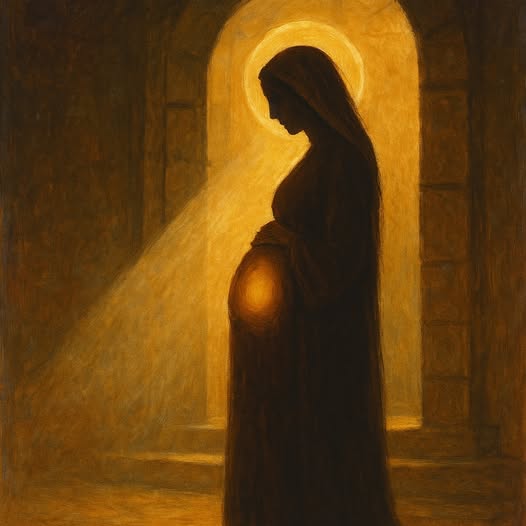
Mount Hermon’s ancient legacy, both in Scripture and in Second Temple Jewish tradition, provides a cosmic backdrop against which the transfiguration of Jesus Christ takes on startling new depth. As discussed, the Book of Enoch and other sources paint Hermon as a site of spiritual insurgency—a place where rebellious angelic beings, often referred to as “Watchers,” descended, swore their unholy oaths, and introduced corruption into the human story. Against this background, Christ’s luminous revelation of His glory on Hermon is more than a picturesque theophany; it is the opening move in a divine stratagem orchestrated to overthrow these very powers.
The Divine Inversion: From Transfiguration to Crucifixion
Within the Gospel narratives, the Transfiguration is closely followed by a renewed focus on the path to the cross. Immediately after revealing His divine sonship and the radiance of His glory, Jesus begins to speak openly of His impending suffering and death. The flow of events is deliberate and theologically charged: in the very region known for spiritual rebellion, Jesus symbolically claims superiority and sets a trap for the rebellious “elohim”—a term sometimes used to describe divine beings who are lesser than the Most High God.
These spiritual powers, having long held sway over humanity through fear, sin, and the threat of death, witness Jesus’ assertion of divine authority. Yet, rather than capitulating, they take the bait. Convinced they can snuff out the Messiah and maintain their hold, they influence human leaders and move history toward the crucifixion. In doing so, they commit their greatest error.
A Cunning Plan Concealed in Weakness
Early Christian tradition, reflected in passages like 1 Corinthians 2:6-8, suggests that the spiritual rulers—the rebellious elohim and their earthly counterparts—did not fully grasp the wisdom of God’s redemptive plan. Paul writes: “None of the rulers of this age understood it; for if they had, they would not have crucified the Lord of glory.” By stepping into the fray on Hermon, Jesus unmasked these powers, drawing them out into open conflict. In their pride, they would seek His destruction, not realizing that the cross would be the very means by which they would seal their own defeat.
The Transfiguration can thus be seen as the strategic “opening gambit” in the final cosmic struggle. Christ shows His divine identity not only to His disciples but, implicitly, to all spiritual watchers. He allows them to believe they can remove this threat by death, all while knowing that His crucifixion—and subsequent resurrection—would upend their dominion. The cross, in traditional Roman and Jewish sensibilities, was the ultimate symbol of weakness and defeat. Yet for Jesus, willingly going to the cross was a supreme act of power and love. Through His sacrificial death, He broke the chains that these hostile entities had forged. The resurrection that followed declared, once and for all, that these creatures of rebellion stood powerless before the eternal Son of God.
Hermon and the Cosmic Reversal
By positioning the Transfiguration on Mount Hermon, the entire salvation narrative is framed as a divine incursion into enemy territory. Jesus does not simply reveal His glory in a safe, familiar, or traditionally hallowed space; He does so where the seed of rebellion was planted long ago. This cosmic showdown reaches its crescendo at the cross, where the rebellious powers—emboldened by what they perceived as Christ’s vulnerability—strike, only to find they have been lured into orchestrating their own downfall.
Conclusion
The Transfiguration on Mount Hermon, followed so closely by the path toward crucifixion, weaves together a tapestry of divine cunning and cosmic redemption. Far from being an isolated epiphany, the Transfiguration is the prelude to a grand reversal. It sets the stage for the most astounding turn in spiritual history: the rebellious elohim, once emboldened by their perceived ascendancy, are tricked into action. They engineer the death of Christ, only to discover that this very act shatters their authority over humanity.
In light of this interpretation, the Transfiguration takes on a rich, multidimensional character. It is both a declaration of Christ’s divine identity and the first movement in a brilliant strategic drama. The “mount of transgression” is transformed into a mount of revelation. The old narrative of rebellion and corruption is countered by the new narrative of sacrificial love and cosmic victory. In Christ, on Hermon, we see not only the unveiling of divine glory, but the commencement of a conquest that would ultimately free humanity from the grip of spiritual darkness forever.
Discussion Questions
- How does interpreting the Transfiguration as occurring on Mount Hermon, rather than Mount Tabor, reshape our understanding of the event’s theological significance, particularly in relation to ancient spiritual rebellion?
- In what ways does the association of Mount Hermon with the rebellious Watchers and cosmic conflict enhance the portrayal of Jesus as victor over both earthly and heavenly powers revealed in the Transfiguration?
- How does the setting of the Transfiguration at Hermon—and its proximity to pagan cultic sites—speak to the inclusive and boundary-crossing nature of Jesus’ kingdom, as it extends beyond traditional sacred centers into contested spiritual territories?
Want to Know More?
- G.W.E. Nickelsburg and James C. VanderKam, 1 Enoch: A New Translation (Fortress Press, 2004) – Provides critical insight into the traditions surrounding the Watchers’ descent on Mount Hermon and the broader Second Temple Jewish worldview that shaped early Christian interpretations.
- R.T. France, The Gospel of Matthew (The New International Commentary on the New Testament; Eerdmans, 2007) – Offers a scholarly exegesis of the Transfiguration narrative, including discussions of the event’s possible geographic and theological setting.
- The Anchor Yale Bible Dictionary, edited by David Noel Freedman (Yale University Press, 1992) – Contains authoritative articles on “Hermon,” “Mount of Transfiguration,” and related topics, providing historical, linguistic, and cultural context grounded in current academic scholarship.
- Reversing Hermon: Enoch, the Watchers, and the Forgotten Mission of Jesus Christ by Dr. Michael S. Heiser
This book explores how the story of the Watchers in 1 Enoch influenced New Testament theology, especially in understanding Christ’s mission. Dr. Heiser argues that part of Jesus’ work was to reverse the effects of the rebellion on Mount Hermon described in 1 Enoch 6–11. By linking Genesis 6, Psalm 82, and passages in 1 Peter and Jude, the book highlights how Jesus not only came to redeem humanity but also to undo the corruption brought by the rebellious sons of God.





